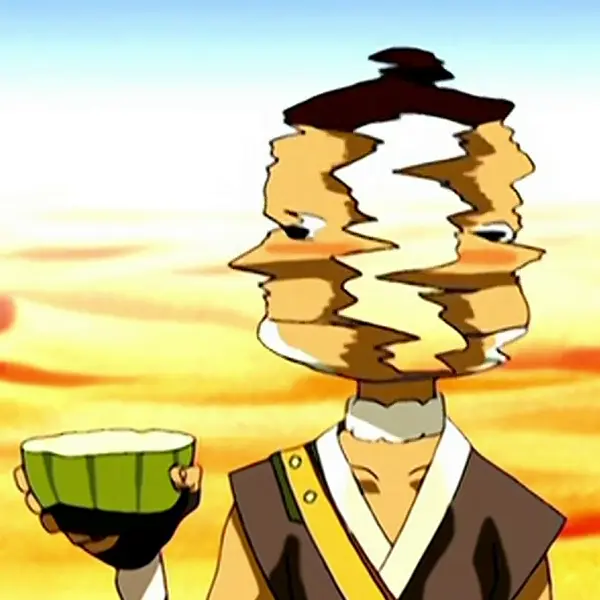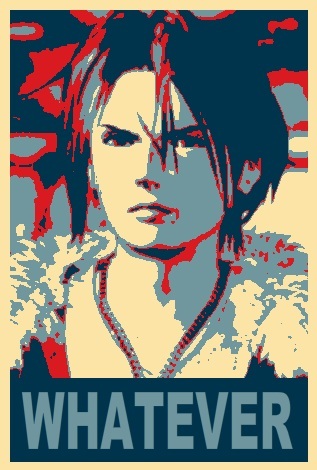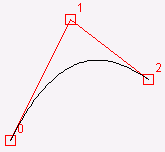- cross-posted to:
- [email protected]
- cross-posted to:
- [email protected]
Another cloud free day in Scotland let me catch almost 9 hours of this huge and lively prom. Taken with my home made 90mm modded Coronado PST and DMK21 camera. Software: CdC, Eqmod, DSSR, AutoStakkert!, Wavesharp, DVS, Shotcut and Gimp.
David Wilson on April 8, 2025 @ Inverness, Scotland
https://spaceweathergallery2.com/indiv_upload.php?upload_id=221951
Nah, that is just my girlfriend taking a shower.
What a hottie.
How are you using Gimp with this?
I’m assuming, like the other response said, overlay graphics, but also possibly to animate it.
Probably for making the static overlay graphics, and possibly the clock hands.
So dumb question, but what’s causing the gap between the plasma cloud(?) and the surface? And is that gap filled with something that is invisible?
The dynamics there due to sheer gravity, magnetism and levels of energy/radiation that are utterly alien to our daily experience.
I get some of the basic underlying mechanics, but I absolutely cannot comprehend it. Incredible.
deleted by creator
This is the mechanism that makes Cepheid stars regularly and predictably change intensity
Doesn’t it also make the Cepheid noticeably swell (then deflate) in circumference? Or does it maintain the same basic size, and it’s just storing magnetic bubbles of hot plasma like a halo, before bursting and releasing all that accumulated material?
deleted by creator
That gap is actually magnetic field lines suspending the plasma above the surface - its like the plasma is “riding” along magnetic highways in the sun’s atmosphere, and the space between isnt empty but filled with less dense solar atmosphere thats invisible at this wavelenght.
Plasma is electrically charged, so it interacts with magnetic lines.
The sun has magnetic field lines just as the earth does. It also rotates. But- since it’s not solid, it doesn’t have to rotate all at the same speed. The plasma in fast-rotating regions drags the field lines further than the plasma in slow rotating areas, creating weird loops, breaks and reconnections in the field lines. I’m almost certain that what we’re seeing in this lovely bit of photography is a cloud of plasma travelling across, or trapped by one of those rogue field lines which has been pushed upwards from the surface by differential rotation.Nuh-uh, come on, that can’t be real. So cool.
Even cooler: solar flares and mass ejections come about when one of the lines snaps like a whip and hurls billions of tonnes of plasma into space. Search: solar magnetic reconnection.
I see words in this thread but don’t understand, but are you saying here that those streams / clouds are taught? In order to be snapped.
Yes, the material the streams are made of is magnetic, and there is a strong and unusual magnetic field around the sun. So those streams are trapped by magnetism.
That’s fascinating. Thank you for sharing!
All that energy and here we are burning oil like cavemen in the dark.
Caveman didn’t burn oil 🤓
They might have soaked fabric or some other material in animal fat (which is just oil that’s solid at room temperature), wrapped it around the end of a stick, and lit it on fire. 🤓🤓
And, if they did, it probably wouldn’t be dark anymore.
checkmate communists
You know any efficient way to harness that energy?
Solar panels?
Haven’t seen a solar panel that can take a cloud of plasma many times the size of earth.
The most efficient, a NASA solar panel that cost tens of thousands of dollars and uses fucking gold foil, is only 13% efficient. So try again.
Modern residential solar panels are around 22-24% efficient.
And why are you worried about the rest of that energy? You worried it’s gonna be lost?
Who said you need to catch all of it in a single panel??
The reason nasa goes overboard (though, not really), is because it’s worth it for space stuff. On the surface we have an abundance of space
Doesn’t take a genius: Dyson Sphere
Doesn’t take a genius
Dyson Sphere
I assume that’s sarcasm 😂
Roughly you need at least 906.000 km² of 1x1m solar panelling.
I know a guy.
That’s actually not the worst. It seems doable to produce that much square area of solar panels, even for a civilization like us. We need about 500 000 square kilometers of solar panels on the Earth’s surface to power our global electrical needs. This is within the realm of possibility
The more tricky part is to actually position it around the sun, that part is what makes it impossible for our current tech level and space infrastructure
Yeah the possibilities of a solar field on the moon is much more sensible.
It never loses suction
tng dyson sphere, except the star end up killing or causing the civilization to abandon the sphere.
Yeah just grab a handful.
Corn has been doing that. We only need to wait for the oil lobby to die and then science will probably figure things out…
Well I can’t ram the sun up the ass of my Silverado. Although if I outlive that thing, I’m replacing it with a horse or something. New vehicles freak me out man.
Come on tell tech daddy where you go on weekdays & weekends for how long at what speed with how many passengers!
Look at this and tell me life couldn’t evolve on the Sun, that is a stable structure with reputation patterns, this alone is enough to make Conway’s game of Life
Life as we know it could not “evolve” on the sun. And technically life has to be present first before it can evolve. Evolution isn’t what created life. It’s just how the living change over time.
A gaseous cloud in space the size of 7 suns may have the ability to flow right past us, but also, think.
Obviously plasma beings would be nothing like us at least physically (theoretically it could have similar systems like nervous systems)
And as for life having to exist first, ehh, terms get vague at that point, are the chemicals alive? No, but when they happen to be in a certain state they are, I prefer to think of it like Rocks evolve into a planet, not the same thing as biological evolution but it’s the same word and since the chemicals are the predecessor to life then they did evolve from them in that manner just no genetics involved
Except you don’t just get to conflate your personal definition of evolution with the scientific one. If you want to believe rocks “evolve” into a planet, that’s fine. But if you start bringing that up without clarifying your definition of evolution and how it factually differs from the scientific one, people will think you’re crazy.
Except chemicals do literally evolve into life which evolve into DNA, it is a fuzzy point because DNA didn’t exist yet, but it is still natural selection and random chance that leads to the first life form, I am deliberately conflating biological evolution with the more main stream definition because at that point in time biology physics and chemistry were all physically conflated.
This is entirely incorrect. Abiogenesis is the mechanism that converts “chemicals” to life. The only thing you are deliberately doing is stating factually incorrect concepts about an intensely deep and developed area of study. The “more mainstream definition” is just wrong.
I’m pretty sure somewhere a being exists that is basically just self modifying plasma fields living inside a nova remnant
Sounds like the kind of thing a self-modifying plasma field living inside a nova remnant would say, on the internets.
No indeed, fellow carbon-having being! I am truly an human, that does many humanish things like laughing and farting, sometimes both at once! akakakakak!
It is silly to think that anything as beautiful and majestic as a self-modifying EM field could exist, I mean such a being would be perfection right? Basically a glowing radiant god yes? Oh my I truly wish I was a free-flying energyform of psychically controlled vortexes of pure creation, instead of this little crunchy salt water sack that we humans are always being.
No, I truly love this cold little rocky world where matter can exist in other simpler forms than vibrating and glorious plasma.
We know it’s life, I can see the souls sucking from the clouds into the inner sun.
They were born in the early days of all things, when even space burned with white hot fire
They persisted, EM fields feeding their core the kaleidoscope soup of nameless plasma and shattered atom hearts and over strange aeons began to learn to shape the fields that fed and flew them
In time as the particle sea began to cool, they found refuge in brief stars larger than solar systems, cavorting and chasing in the balmy updrafts so hot that even helium burns
Now in this cold distant future, where stars are but unreachable cinders, they scrimp and conserve the relatively little time our sun has left to them, some two billion short years hence.
Pray for our star children, we cannot grasp even a fraction of the cosmic empire they have lost
we cannot grasp even a fraction of the cosmic empire they have lost
I just finished the last book in The Expanse. This really made me think of the gate builders
E: I should have also said, loved your post!
Thank you, it’s been a really low week and knowing you liked my post has been healing for me these two days.
Not enough people engage on lemmy yet and I wanted to be sure you knew that your comment meant a lot to me. I love to write but rarely get any feedback on it.
:-)
fuckin love the fediverse
I’ll give you $10 if you lick it.
I licked it, where’s my money?
Prove it!
looks like a creature.
I need details on how you homemade some stuff.
Thanks. That looks like some serious work, although very detailed.
i d like one a little slower , here i just blink and one hour passes… mesmerising !
The “earth to scale” really boggles my mind 🫨
Thank you, I didn’t even see that.
it really puts things in perspective…
Needs banana
It’s there, you just gotta zoom in a bit.
Therenis banana on the Earth
That is mezmerizing. Is there any way to know how big this thing is?
See Banana Earth for scale, top left?
Totally missed that. Thx.
That thing is massive!
This image is cool as fuck. No! Wait. This image is hot as fuck.
( ͡° ͜ʖ ͡°)
It’s both!
Absolutely amazing that you could capture that with “amateur” equipment, although it is clear from your post that a lot went into this. Bravo!
It’s crazy this guy is just doing this on his own. Looks like something from NASA to me.















